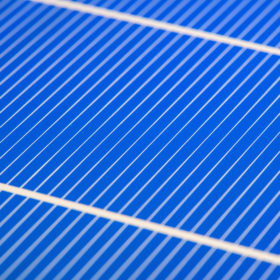
National Renewable Energy Lab researchers conducted hourly modelling based on a future energy mix containing 55% solar power and found spring days of free electricity among the results, emphasizing the critical role energy storage will play.
Modeling by researchers from the strategic energy analysis center at the National Renewable Energy Laboratory (NREL) has illustrated how the U.S.’ three main power grids would run on the most solar power-rich days in an energy system where 55% of annual power was supplied by PV.
The hourly modelling in the Sunny with a Chance of Curtailment: Operating the US Grid with Very High Levels of Solar Photovoltaics report published on the ScienceDirect website considers days when at least 90% of electricity is from PV and demonstrates how much surplus solar power would be generated in spring and how energy pricing might be affected.

The modeling also examines less ambitious solar scenarios – but we’ll put those to one side. The scenario related to an energy system driven 55% by solar each year – ‘low-cost PV + storage’ – considers energy storage priced at $97/kWh of capacity and solar electricity at $0.02/kWh without incentives. Some 1,618 GW of solar generation capacity and 346 GW of storage are posited.
The crux of the issue is, how do we keep the system running safely, and in a relatively economically sound manner while adding in sources of intermittent clean electricity? The authors suggest high levels of control and co-ordination with other, dispatchable resources would be needed, plus the energy storage. Solar module-level controls would also be greatly appreciated, note the authors. Other studies, which have modeled 100% of suitable rooftops to be fitted with solar have reached the same conclusion. In fact, as the penetration of solar reaches its peak in this model – see the right-hand side of the top row below – some of the sudden shifts would get pretty extreme. Modern lithium ion technology can instantaneously react and handle such shifts and it would certainly be required.

The greatest mitigation of such ramps would occur once energy storage is deployed in massive amounts in the low cost PV + storage scenario, as seen in the right-hand row above and in the image above that which feature a flat, smooth output from fossil sources.
The economically challenging days of low electricity prices driven by heavy volumes of generation are almost entirely caused by high levels of solar power, with a chunk of it in the spring periods of temperate clear days during periods of lower electricity demand.
The result is around 66 minutes each day when as much as 41% of the solar energy generated would potentially go to waste. That would only occur in around 4.9% of the total number of hours modeled, however, and so would equate to around 6.6% of all electricity generated, as shown in the chart below.

Research has been produced which indicates designing for solar curtailment enables the monetization of the excess energy and the resulting deployment of more solar.
The NREL used a commercially available hourly modeling tool to look at the whole of the United States and figure out which hours thirty years hence might have cheaper electricity. Which makes you wonder if 80% renewables is cake and we can let the extremists scrap over the rest.
Lắp đặt điện mặt trời Khải Minh Tech
https://ift.tt/2X7bF6x
0906633505
info.khaiminhtech@gmail.com
80/39 Trần Quang Diệu, Phường 14, Quận 3
Lắp đặt điện mặt trời Khải Minh Tech
https://ift.tt/2ZH4TRU
Không có nhận xét nào:
Đăng nhận xét